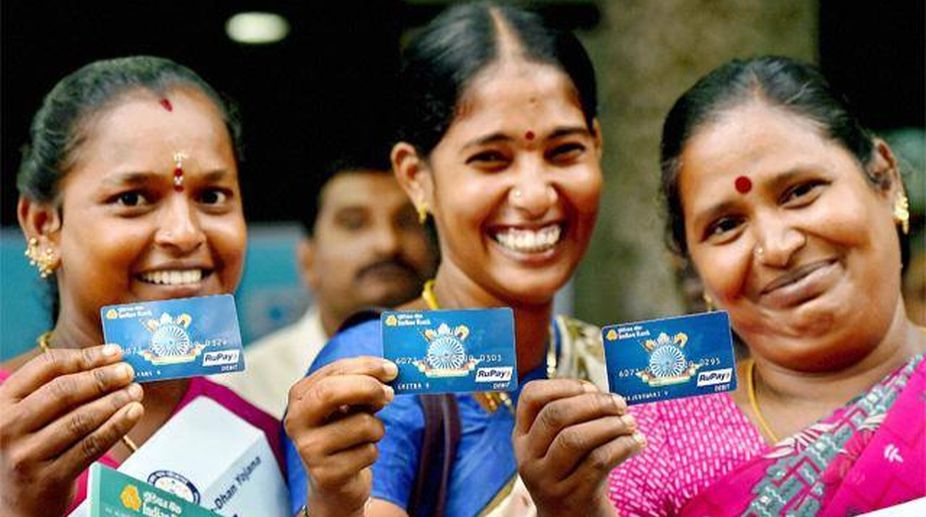Aadhaar, Jan Dhan giving big push to digital India ecosystem: Instamojo’s CEO
According to Swain, three different buckets of opportunities got created over the last three-four years.

(Photo: Facebook)
Access to the right financial tools at critical moments can be a key element in overcoming stubborn realities. It can provide an opportunity to move out of poverty or absorb a shock without being pushed deeper into debt.
The poor need to set aside money in times of plenty and draw it out in lean times. Without a safe place to save money, it’s difficult to cope with the unexpected or to plan for the future. Without access to affordable credit, it is difficult to get a business idea off the ground or to acquire an asset like a house or higher education.
Without insurance, all your security can be wiped out by one misfortune. Financial services allow you to insure for health care, save for children’s education, and borrow for wedding or funeral costs.
Advertisement
There are basically three financial needs of the poor:
As accountholders, people are more likely to use other financial services, such as credit and insurance, to start and expand businesses, invest in education or health, manage risk, and weather financial shocks, which can improve the overall quality of their lives.
To use financial services to their full potential, to protect their families and improve their lives, the low income people need products well suited to their needs. Bringing this about requires attention to human and institutional issues, such as quality of access, affordability of products, sustainability for the provider of these services, and outreach to the most excluded populations. India’s financial inclusion agenda received a steroidal boost with Prime Minister’s Jan Dhan Yojana (PMJDY) the world’s biggest financial-inclusion programme.
The scheme was launched on 15 August 2014 with a target to provide universal access to banking facilities. This scheme is the now the most powerful driver of financial inclusion.
The PMJDY consists of six pillars:
Zero balance accounts have declined from 76.8 per cent in September 2014 to 21.4 per cent by 23 August 2017. The number of accounts opened by women is 14.5 crore. The amount of money in these accounts is Rs 65,900 crore, implying an average of Rs 2,234 in each account as compared to Rs 837 in January 2015. This scheme is a grand success taking into account the fact that total accounts in the banking sector in March 2014 – before the launch of PMJDY – were just about 125 crore. Banks are seeing increasing traction in these accounts.
While the final word is yet to be said on the alleged channelling of black money into Jan Dhan accounts, the scheme has indeed led to a transformation. According to the NPCI, which handles the RuPay cards being given to Jan Dhan customers, out of 385 million RuPay cards, 225 million are of Jan Dhan accounts.
A bulk of the RuPay card transactions are through ATMs, while about 25-30 million customers have started transacting via point of sale (PoS) terminals, signifying the advent of e-commerce and digital transactions in rural India. Now that financial inclusion in the sense of universal bank accounts has been driven by Jan Dhan along with Aadhaar seeding, it will have to go on to offer a basket of financial products such as credit and insurance, which are yet to take off in a big way. The opportunity to reach the financially excluded with a new generation of financial services has huge developmental as well as commercial potential.
One of the ways for accelerating this path is through digital financial inclusion. It is perhaps the most powerful tool to unlock the most value for those at the bottom of the pyramid. Although digital technology is opening new channels for delivering financial services, challenges persist. Sparse populations, inconsistent network coverage, lack of trust, or insufficient capital for building new business models, can stand in the way of success, particularly in connecting remote or underserved communities.
The challenge of financial inclusion is to understand what is best about all the different ways to reach underserved customers. It is about understanding what works and building on it. The rapid spread of mobile phones is the game changer that can make the economic benefits from digital finance possible. Fortunately, mobile phone penetration is growing far more quickly than access to financial services.
The right way to drive a revolution of this type is through empathy — not a form of empathy that comes from superiority, but one born from a profound humility. It is an offering of respect, a moment of listening to stand in the shoes of another.
The most successful leaders were those who recognized it and invoked it in developmental interventions they shepherded. When we design solutions that recognize all as equal partners, we have a real chance of making to goalpost.
Each society is at different stages of digital financial inclusion and the necessary solutions and interventions must be appropriate for the cultural and economic context.
By respecting the cultural outlook of the people and embracing their concerns we enlist their buy in, and that is what paves the way for lasting and sustainable success.
(The writer is a Nagpur-based scholar and author of Village Diary of a Heretic Banker. He can be reached at moinqazi123@gmail.com)
Advertisement